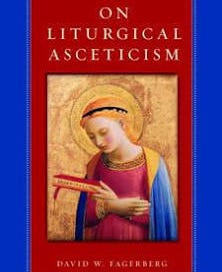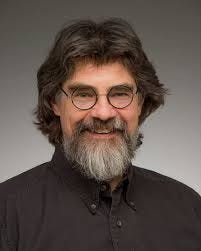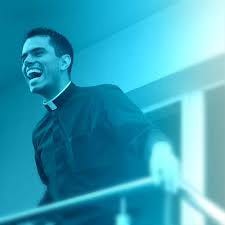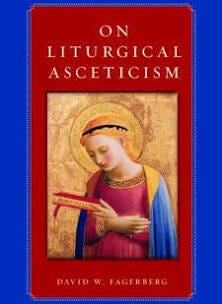Thanks to Father Fernando Camou I have been reading a lot of David Fagerberg, a theologian who writes on liturgical theology. His first book is simply titled What Is Liturgical Theology?, and after I read it I was hooked. He writes about the fact that the liturgy is something that goes on in heaven, that Jesus offers to the Father, but that we participate in both during the celebrations of the liturgy (Mass, Confession, etc.) but also in the liturgy of our daily lives. As Saint Paul says, “I urge you therefore, brothers, by the mercies of God, to offer your bodies as a living sacrifice, holy and pleasing to God, your spiritual worship” (Romans 12:1). What we do in Mass on Sunday helps us to offer our whole lives to God. Liturgy shapes and forms our whole life. Amazing!
So, here is Fagerberg’s definition of liturgy which is very dense and which I want to unpack in this post:
Liturgy is the Trinity’s perichoresis kenotically extended to invite our synergistic ascent into deification.
That’s right! Let’s unpack it.
The liturgy, which means the seven sacraments and the liturgy of the hours, the prayer of the Church, but also the liturgy of life that is made possible by the Church’s prayer, is an invitation into the life of the Trinity. Grace comes down and we go up. Let’s go a little deeper into the vocabulary (by the way, spellcheck marked both “perichoresis” and “kenotically”, but “synergistic” and “deification” was okay).
The Trinity, Father, Son, and Holy Spirit, is an inexhaustible mystery. God is both one and three. How do we understand the unity and diversity of God’s mystery. One way of thinking about the divine life is as a dance. In fact, that is the first word in our vocabulary lesson: perichoresis. We have all heard of choreography, the dance that is written (graph) and staged for a performance. The word “peri” in Greek means “around”. Put those two words together and you get perichoresis, the divine dance, the three persons dancing around and in and through each other in the one God.
But the mystery of God is not a dance to be comprehended (if you comprehend it, it is not God) but to be entered into. How is possible to enter the divine dance? God pours himself out, empties himself out in love for us, and this is called (in Greek) kenosis. So, to say that the the liturgy is “the Trinity’s perichoresis kenotically extended” is to say that God does not keep his dance to himself. God pours our (kenosis) his very life. The word in Fagerberg’s definition that strikes me so much is “extended”: it makes me think about a virtuoso dancer who stretches out his hand to us and invites us to take part in the dance.
The hand extended, though, is only an invitation. God forces no one into this dance. And so Fagerberg tells us that the hand is extended to “invite our synergistic ascent into deification.” Synergy is such a wonderful term. It combines two words “syn” (with) and “energy”. This is the great mystery of salvation and our participation in God’s grace. Saint Paul uses a whole host of words in the New Testament to speak about this “syn” that has been made possible by Christ. Synergy does not mean that God does part and I do part, as if God and I were on the same plane of action. Rather, synergy means that God makes possible my action in response to him. His action is so much greater, in fact it cannot be compared since they are on different planes, but my action is still necessary. Two energies are at work, divine and human, in a very mysterious way. Suffice to say that the work of both is unequal in power but equally necessary. God does not want to dance without us but he extends his hand in an invitation that requires my loving response.
We’re almost there. If kenosis is God’s downward movement, then ascent is our upwards movement. Liturgy is, to simplify Fagerberg’s definition, God coming down in order to raise us up. The main actor in the liturgy, if it is not obvious from what has been said so far, is God, not humanity. This is so important. How many times have we come to Mass thinking that we are doing something for God? “Here I am Lord, aren’t you lucky?!” Okay, the song doesn’t go like that, but that could characterize our approach sometimes to Mass. But no, the liturgy is God’s work, his hand extended, inviting us into the divine dance, that we must assent to in order to ascend to him.
And, lastly, what is deification? We are not very used to this word in Western Christianity but it is all over Eastern Christian spirituality. We can sum up with this beautiful phrase from the Church Fathers: “God became man in order to make men gods.” Really?! Yes. And if you think Christianity is anything less, then you have been sadly misinformed. There is room in the divine dance for us, but a transformation has to take place before we can learn the steps of the dance. This transformation is called “deification” or “divinization”. It took me four times to type that last word because auto-correct didn’t want to admit that this is a word. Well, it is a word. Damn AI! And not only is it “a” word, it is “the” word. This is our human destiny, to be divinized.
There is room for you in the Trinity. We are called to be sons and daughters in Jesus Christ the son. Therefore, whoever is in Christ is a new creation. The old has passed away, behold, new things have come. This is the reason God kenotically pours himself out, extending his hand to you as an invitation into the divine dance: to make of you and me a new creation. And this is what happens every time we participate in the liturgy.
O come, let us adore him!







Thanks for this, this is awesome and so informative. I never heard of the Trinity being like a dance… and then extending His hand inviting us in. Wowwwww. It actually makes sense the way it’s broken down🤯